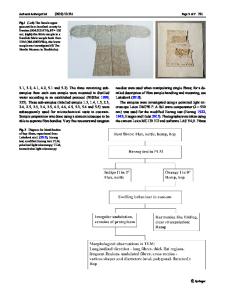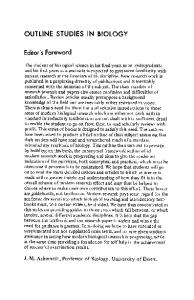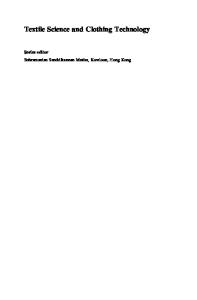Polysaccharide Fibres in Textiles
Besides naturally grown cellulose fibres like cotton, hemp or flax, interest in textile fibres made up from regenerated cellulose is growing. By sure the use of a polymer material, which is provided by nature in huge amounts, favours its use as more susta
- PDF / 545,300 Bytes
- 28 Pages / 504.567 x 720 pts Page_size
- 63 Downloads / 408 Views
Polysaccharide Fibres in Textiles Lidija Fras Zemljic, Silvo Hribernik, Avinash P. Manian, Hale B. O¨ztu¨rk, Zdenka Persˇin, Majda Sfiligoj Smole, Karin Stana Kleinscheck, Thomas Bechtold, Barbora Sˇiroka´, and Ja´n Sˇiroky´
Contents 7.1 Introduction .............................................188 7.2 Characterisation of Cellulose Structure by Sorption Behaviour: Changes During Processing ................................................192 7.3 Effects of Alkali Type on Cellulose Fibre Properties ................................................192 7.4 Accessibility and Reactivity .......................194 7.5 Structural Assembly of Textiles and Its Influence in Processing Swollen State.........195 7.6 Plasma Activated Regenerated Cellulose Fibres and Their Properties ......................196 7.7 Antimicrobial Functionalisation of Cellulose Fibres Using Polysaccharides ......199 7.8 Functionalisation of Regenerated Cellulose Fibres by Magnetic Nanoparticles..............203 7.8.1 Modification of Regenerated Cellulose Fibres by Magnetic Coatings .................................204 7.9 Spun-Dyed Cellulosics...............................205 7.9.1 Mass Colouration of Viscose or Cuprammonium Rayon ...............................205 7.9.2 Mass Colouration of Lyocell........................207 7.10
Outlook....................................................207
References ..........................................................208
T. Bechtold (*) Research Institute for Textile Chemistry and Textile Physics, University Innsbruck, Hoechsterstrasse 73, 6850 Dornbirn, Austria e-mail: [email protected]
Abstract
Besides naturally grown cellulose fibres like cotton, hemp or flax, interest in textile fibres made up from regenerated cellulose is growing. By sure the use of a polymer material, which is provided by nature in huge amounts, favours its use as more sustainable material compared to oil-based products. However, a much stronger argument is the high variability of the properties that can be achieved, which allows design an extremely wide range of products. In this chapter the main characteristics of textile fibres from regenerated cellulose are highlighted. Dependent on the production process, pore characteristics, accessibility and surface can be shaped. The chemical reactivity of the cellulose polymer and the swelling behaviour of the fibrous structure permit many chemical conversion processes towards specialised products. Representative examples for fibre modifications are highlighted in this chapter, among them are fibre reorganisation during swelling processes, accessibility-controlled reactivity, plasma treatment for surface modification, antimicrobial functionalisation, deposition of magnetic nanoparticles and incorporation of pigments. The given examples demonstrate the diversity of processing strategies which all lead to unique products with specific functionality.
P. Navard (ed.), The European Polysaccharide Network of Excellence (EPNOE), DOI 10.1007/978-3-7091-0421-7_7, # Springer-Verlag Wien
Data Loading...











